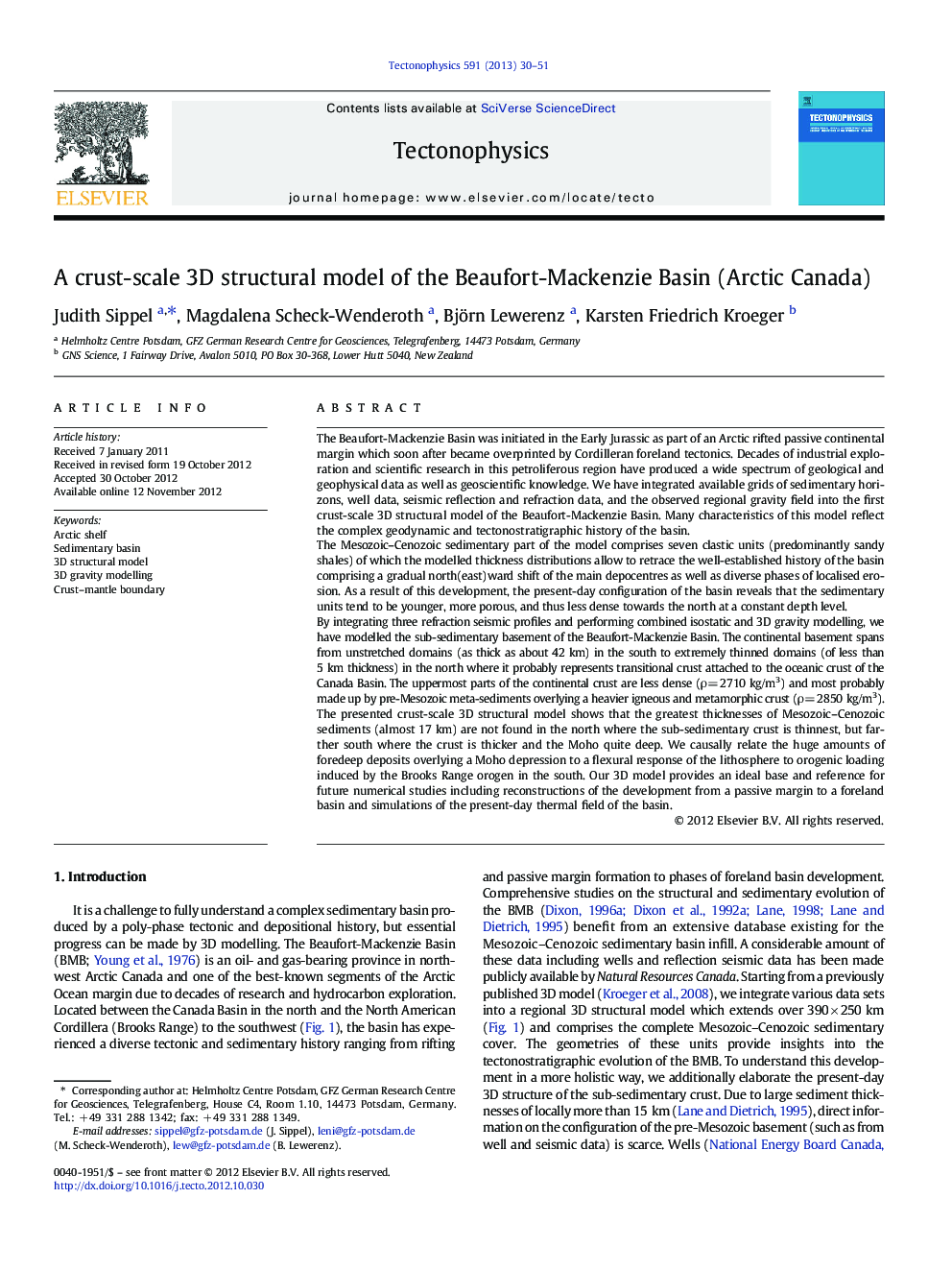| کد مقاله | کد نشریه | سال انتشار | مقاله انگلیسی | نسخه تمام متن |
|---|---|---|---|---|
| 4692414 | 1636794 | 2013 | 22 صفحه PDF | دانلود رایگان |

The Beaufort-Mackenzie Basin was initiated in the Early Jurassic as part of an Arctic rifted passive continental margin which soon after became overprinted by Cordilleran foreland tectonics. Decades of industrial exploration and scientific research in this petroliferous region have produced a wide spectrum of geological and geophysical data as well as geoscientific knowledge. We have integrated available grids of sedimentary horizons, well data, seismic reflection and refraction data, and the observed regional gravity field into the first crust-scale 3D structural model of the Beaufort-Mackenzie Basin. Many characteristics of this model reflect the complex geodynamic and tectonostratigraphic history of the basin.The Mesozoic–Cenozoic sedimentary part of the model comprises seven clastic units (predominantly sandy shales) of which the modelled thickness distributions allow to retrace the well-established history of the basin comprising a gradual north(east)ward shift of the main depocentres as well as diverse phases of localised erosion. As a result of this development, the present-day configuration of the basin reveals that the sedimentary units tend to be younger, more porous, and thus less dense towards the north at a constant depth level.By integrating three refraction seismic profiles and performing combined isostatic and 3D gravity modelling, we have modelled the sub-sedimentary basement of the Beaufort-Mackenzie Basin. The continental basement spans from unstretched domains (as thick as about 42 km) in the south to extremely thinned domains (of less than 5 km thickness) in the north where it probably represents transitional crust attached to the oceanic crust of the Canada Basin. The uppermost parts of the continental crust are less dense (ρ = 2710 kg/m3) and most probably made up by pre-Mesozoic meta-sediments overlying a heavier igneous and metamorphic crust (ρ = 2850 kg/m3).The presented crust-scale 3D structural model shows that the greatest thicknesses of Mesozoic–Cenozoic sediments (almost 17 km) are not found in the north where the sub-sedimentary crust is thinnest, but farther south where the crust is thicker and the Moho quite deep. We causally relate the huge amounts of foredeep deposits overlying a Moho depression to a flexural response of the lithosphere to orogenic loading induced by the Brooks Range orogen in the south. Our 3D model provides an ideal base and reference for future numerical studies including reconstructions of the development from a passive margin to a foreland basin and simulations of the present-day thermal field of the basin.
► The first crust-scale 3D model of the Beaufort-Mackenzie Basin is presented.
► Sedimentary units are set in relation to the structure of sub-sedimentary crust.
► At a given depth, the sediments tend to be younger and less dense towards the north.
► The thickness distribution of pre-Mesozoic metasediments is presented.
► The deep crustal structure documents rifting-related thinning and foreland flexure.
Journal: Tectonophysics - Volume 591, 8 April 2013, Pages 30–51